Episodes of The Adventures of Superman television series began with an announcer proclaiming “Faster than a speeding bullet! More powerful than a locomotive! Able to leap tall buildings in a single bound!” followed by a crowd of people on a city sidewalk with someone saying, “Look! Up in the sky! It’s a bird! It’s a plane. It’s Superman!”
The series ran between 1952 and 1958 before my time, but I did faithfully watch its re-runs during the early 1960s. (I understood why adults on the sidewalk were initially puzzled by the thing in the sky that turned out to be Superman, but couldn’t quite get their befuddlement week after week.)
About the same time, adults in the woods in northwestern Georgia could have looked up into the sky and been puzzled by something that was not a bird, or a plane, or even Superman. It was a nuclear reactor suspended on cables strung between towers. Really, a nuke on a wire.
Nuclear Aircraft Lab
Beginning in the late 1950s and continuing through its closure in 1971, Lockheed operating the Georgia Nuclear Aircraft Laboratory on a 11,000 acre site near Dawsonville, Georgia for the U.S. Air Force. A short video produced by Lockheed circa 1960 documents the construction and initial operation of the first reactor at the laboratory. A second reactor was later added to the laboratory.
The primary purpose for the facility was to test components and systems intended for use in nuclear propelled aircraft (likely the reason Lockheed was a contractor to the Air Force rather than the Navy, Army, or Coast Guard.) The facility also conducted research into the effect of nuclear radiation on non-aircraft components and wildlife to support atomic weapons consequences studies.
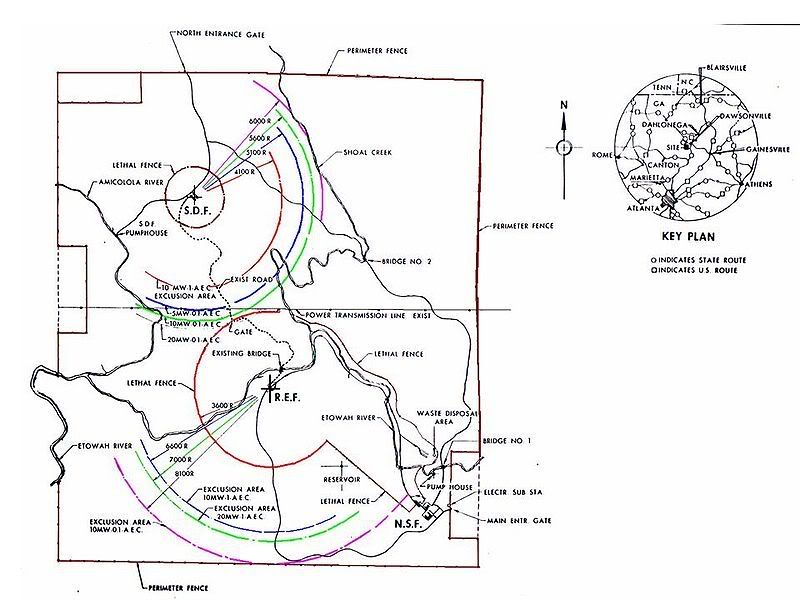
Fig. 1 (Source: Department of Energy)
The laboratory had three major areas – the Nuclear Support Facility (NSF), the Reactor Equipment Facility (REF) and the Shielding Demonstration Facility (SDF) (Fig. 1).
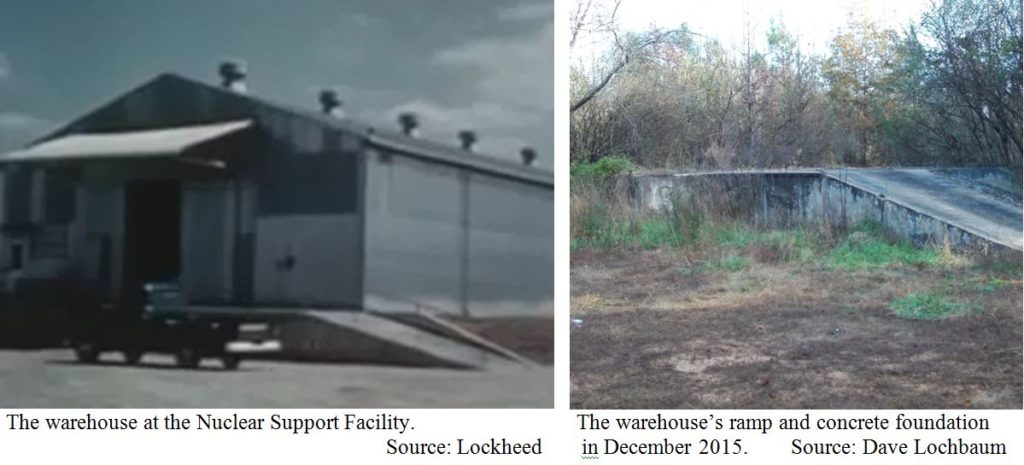
Fig. 2
The Nuclear Support Facility consisted of administration offices, a warehouse, and a large concrete bunker housing a hot cell (Fig. 2). Materials irradiated in the reactors could be transported via a special railcar to the hot cell. Workers manipulating equipment remotely examined the materials for the effects of exposure to radiation.
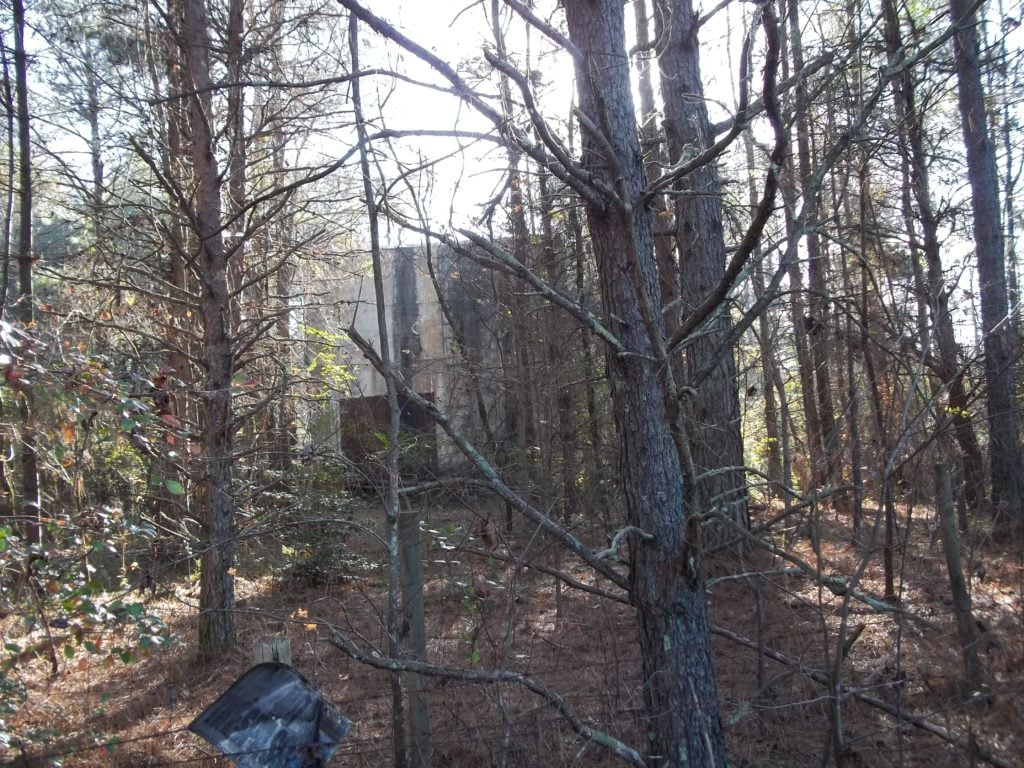
Fig. 3 (Source: Dave Lochbaum)
The hot cell bunker remains today, but its remains are surrounded by a barbed wire fence dotted with frequent “No Trespassing” signs (Fig. 3).
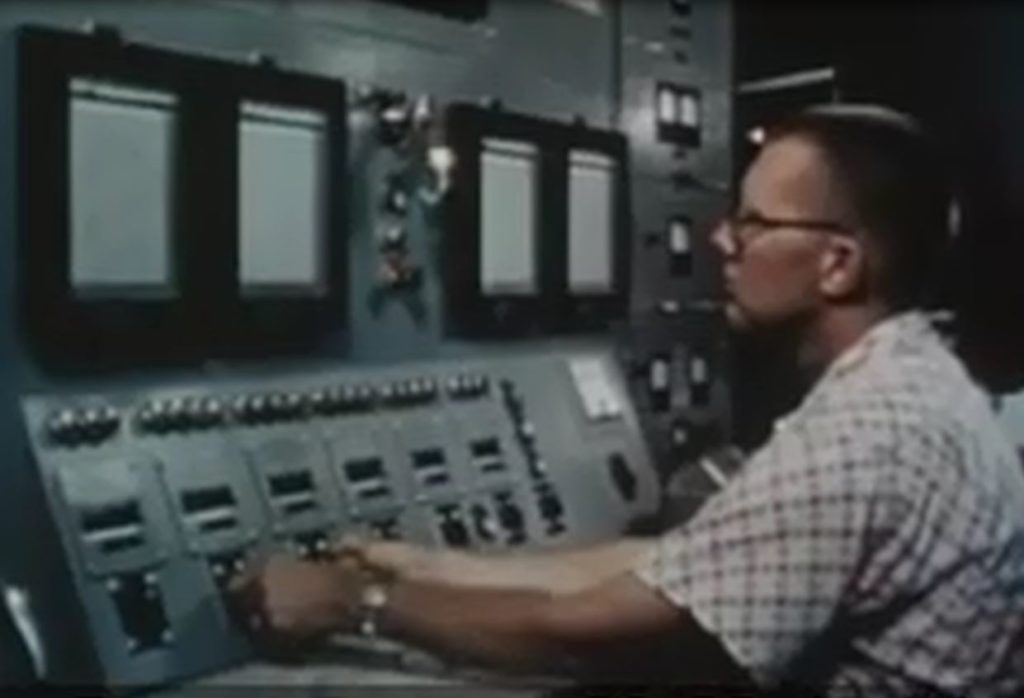
Fig. 4 (Source: Lockheed)
The Reactor Equipment Facility housed a 28-foot long reactor vessel that could be raised from its normal pit in the floor to test radiation effects on components staged within the building. Workers operated equipment and monitored conditions from its control room (Fig. 4).
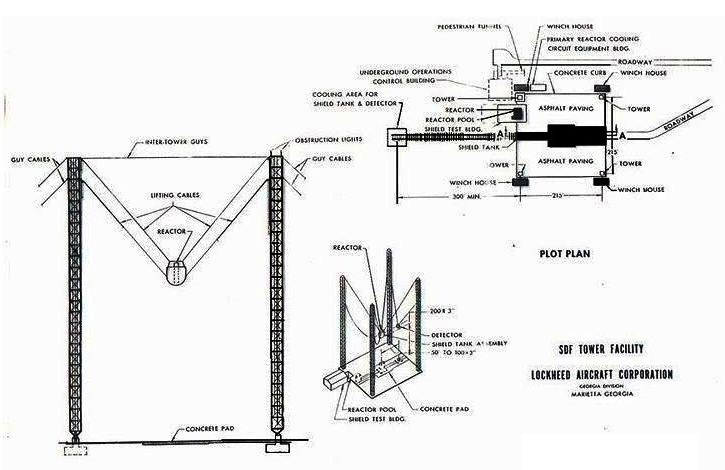
Fig. 5
The Shielding Demonstration Facility consisted of an underground concrete bunker for the control building, a water-filled concrete pool to store the reactor, and metal towers used to hoist the reactor nearly 200 feet into the air (Fig. 5).
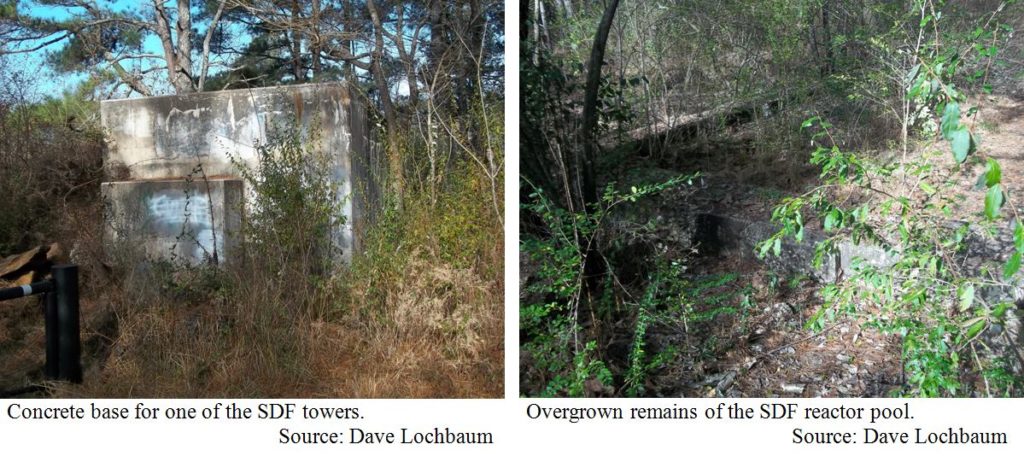
Fig. 6
The SDF had a tall pole topped by microphones (Fig. 6). During reactor operation, workers monitored audio channels for sounds of approaching aircraft. If an incoming plane was detected but not diverted in time, workers had instructions to shut down the reactors to avoid exposing passengers to potentially lethal amounts of radiation. Sounds like a safety plan, of sorts.
Bottom Line
If you ever folded a sheet of paper and sailed a paper airplane across the room or office, you accomplished more flight time and distance than the nuclear propelled aircraft. And it cost you less, way less, than it cost the U.S. government to demonstrate it could not get a nuclear propelled aircraft off the ground.
But the money spent on atomic airplanes was not entirely wasted. Some of the research paid off in other applications.
Does any of your clothing have zippers? If yes, it doesn’t matter. Zippers were invented outside of atomic airplane research space.
Do any of your appliances, gizmos, and gadgets use rechargeable batteries? If yes, it doesn’t matter. Rechargeable batteries were invented via other means.
Did you ever build a paper airplane? If yes, maybe we can fly our planes someday. I’ve given up looking for some useful byproduct from the atomic airplane projects.
Featured photo: Sigmama/CC BY (Flickr)
